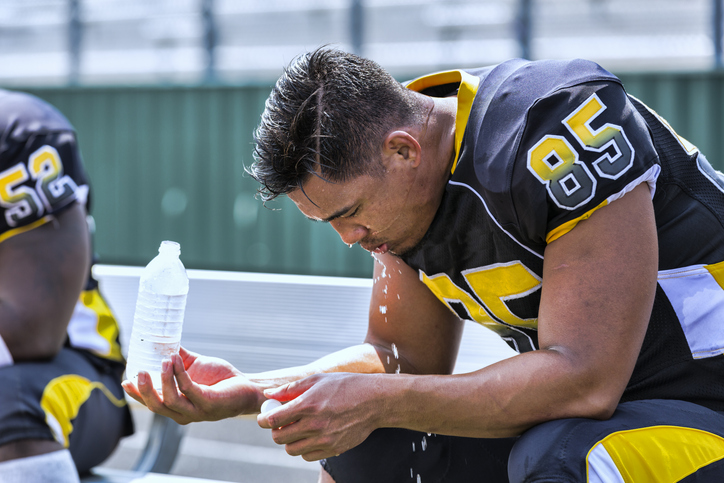
It’s been freaking hot around the world this summer. Here in Oklahoma we’ve had more than a dozen days in July alone with temperatures over 100 degrees.
The chances of suffering a heat-related illness like heat exhaustion and heat stroke go up during extreme heat. According to the CDC, between 2004 and 2018, an average of 702 people died annually from heat-related causes, and thousands more ended up in the hospital. Small children and adults over 65 are most susceptible to heat-related illness. However, it can hit anyone who works or exercises vigorously in the heat. In fact, heat stroke is one of the three most common killers of soldiers and athletes in training.
Below we share how to recognize heat exhaustion and heat stroke and what to do to treat both conditions.
How to Recognize & Treat Heat Exhaustion
Heat Exhaustion Symptoms
Heat exhaustion occurs when your body can no longer cool itself down through sweating due to a loss of water and electrolytes. Heat exhaustion needs to be treated as soon as you recognize it in yourself or others. Left untreated, it can develop into its more severe sibling: heat stroke.
Symptoms of heat exhaustion include:
Heavy sweatingCold, pale, and clammy skinFast, weak pulseNausea or vomitingMuscle crampsTiredness or weaknessDizzinessHeadacheBrief fainting (passing out)How to Treat Heat Exhaustion
The goal of treating heat exhaustion is to cool the sufferer down and restore their fluids.
Move to a cool room. If you don’t have access to an air-conditioned room, at least move to a shady spot.Take a cold shower or bath. If that’s not possible, drape (do not tightly wrap — this will trap heat) cool, wet towels/cloths on the body. Turn a fan on these towels if you can. Remove extra clothing.Sip cool fluids, like water and Gatorade.If heat exhaustion symptoms continue for an hour despite your treatment, seek professional medical assistance.
How to Recognize & Treat Heat Exhaustion
Heat Stroke Symptoms
Heat stroke is the most serious of heat-related illnesses. With heat stroke, the body has lost its ability to cool itself down, resulting in a dangerously high internal body temperature (above 104 degrees Fahrenheit). High internal body temperature is potentially life-threatening as it can cause seizures, organ failure, and rhabdomyolysis. Even if you recover from heat stroke, you can still suffer long-term damage to your heart, brain (creating cognitive deficiencies), kidneys (requiring lifelong dialysis or a transplant), and liver (also requiring a transplant). Heat stroke victims often die months after they’ve “recovered.”
To guide me on the intricacies of identifying and treating heat stroke, I talked to Dr. Sean Langan, a research assistant at the Korey Stringer Institute at the University of Connecticut. The Korey Stringer Institute specializes in research in preventing heat stroke deaths among athletes.
Heat stroke symptoms include:
Central nervous system (CNS) dysfunction:ConfusionAggression/agitation (Dr. Langan says you frequently see heat stroke victims bite and punch people)DizzinessFaintingSeizuresVery high body temperature (104 degrees F or higher)Red, hot, dry skin (no sweating). Sean notes that you rarely see dry skin in people with exertional heat stroke (caused by exercising or working in the heat). Those exerting themselves in the heat may still be sweaty, and you’ll need to be on the lookout for other symptoms, particularly CNS dysfunction.Throbbing headacheNausea/vomitingRapid breathingRapid pulseAccording to Dr. Langan, the critical heat stroke symptom to be on the lookout for is CNS dysfunction:
You can have really fit people who have an internal body temperature of 104 degrees Fahrenheit at the end of a marathon who are fine. Their body is adapted to having that high of an internal temp so they don’t have any CNS dysfunction and they cool down quickly after they finish their race.
You can also have someone who has an internal body temperature of 103, but they’re experiencing CNS dysfunction. This person has heat stroke and needs to be treated.
If you see someone who’s been in the heat who’s showing signs of CNS dysfunction, your best bet is to start treating that person for heat stroke. To confirm, take their temperature with a rectal thermometer (it will give you the most accurate reading)
No comments:
Post a Comment